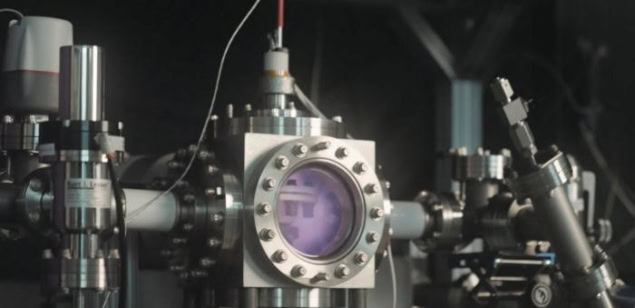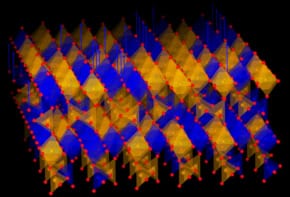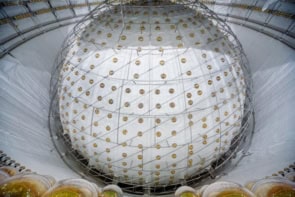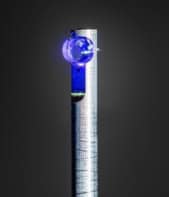
Researchers in Canada have used electrochemistry to increase the rate of nuclear fusion within a metal target that is bombarded with high-energy deuterium ions. While the process is unlikely to lead to a new source of energy – it consumes far more energy than it produces – further research could provide new insights into fusion and other areas of science.
Although modern fusion reactors are huge projects sometimes costing billions, the first evidence for an artificial fusion reaction – observed by Mark Oliphant and Ernest Rutherford in 1934 – was a simple experiment in which deuterium nuclei in a solid target were bombarded with deuterium ions.
Palladium is a convenient target for such experiments because the metal’s lattice has the unusual propensity to selectively absorb hydrogen (and deuterium) atoms. In 1989 the chemists Stanley Pons of the University of Utah and Martin Fleischmann of the University of Southampton excited the world by claiming that the electrolysis of heavy water using a palladium cathode caused absorbed deuterium atoms to undergo spontaneous nuclear fusion under ambient conditions (with no ion bombardment). However, this observation of “cold fusion” could not be reproduced by others.
Now, Curtis Berlinguette at the University of British Columbia and colleagues have looked at whether electrochemistry could enhance the rate of fusion triggered by bombarding palladium with high-energy deuterium ions.
Benchtop accelerator
In the new work, the researchers used a palladium foil as the cathode in an electrochemical cell that was used in the electrolysis of heavy water. The other side of the cathode was the target for a custom-made benchtop megaelectronvolt particle accelerator. Kuo-Yi Chen, a postdoc in Berlinguette’s group, developed a microwave plasma thruster that was used to dissociate deuterium into ions. “Then we have a magnetic field that directs the ions into that metal target,” explains Berlinguette. The process, called plasma immersion ion implantation, is sometimes used to dope semiconductors, but has never previously been used to trigger nuclear fusion. Their apparatus is dubbed the Thunderbird Reactor.
The researchers used a neutron detector surrounding the apparatus to count the fusion events occurring. They found that, when they turned on the reactor, they initially detected very few events. However, as the amount of deuterium implanted in the palladium grew, the number of fusion events grew and eventually plateaued. The researchers then switched on the electrochemical cell, driving deuterium into the palladium from the other side using a simple lead-acid battery. They found that the number of fusion events detected increased another 15%.
Currently, the reactor produces less than 10-10 times the amount of energy it consumes. However, the researchers believe it could be used in future research. “We provide the community with an apparatus to study fusion reactions at lower energy conditions than has been done before,” says Berlinguette. “It’s an uncharted experimental space so perhaps there might be some interesting surprises there…What we are really doing is providing the first clear experimental link between electrochemistry and fusion science.”

‘Cold case’ of cold fusion reopened by Google-funded scientists
Berlinguette also notes that, even if the work never finds any productive application in nuclear fusion research, the techniques involved could be useful elsewhere. In high temperature superconductivity, for example, researchers often use extreme pressures to create metal hydrides: “Now we’re showing you can do this using electrochemistry instead,” he says. He also points to the potential for deuteration of drugs, which is an active area of research in pharmacology.
The research is described in a paper in Nature, with Chen as lead author.
Jennifer Dionne and her graduate student Amy McKeown-Green at Stanford University in the US are impressed: “In the work back in the 1930s they had a static target,” says McKeown-Green. “This is a really cool example of how you can perturb the system in this low-energy, sub-million Kelvin regime.” She would be interested to see further analysis on exactly what the temperature is and whether other metals show similar behaviours.
“Hydrogen and elements like deuterium tend to sit in the interstitial sites in the palladium lattice and, at room temperature and pressure, about 70% of those will be full,” explains Dionne. “A cool thing about this paper is that they showed how an electrical bias increases the amount of deuteration of the target. It was either completely obvious or completely counter-intuitive depending on how you look at it, and they’ve proved definitively that you can increase the amount of deuteration and then increase the fusion rate.”



